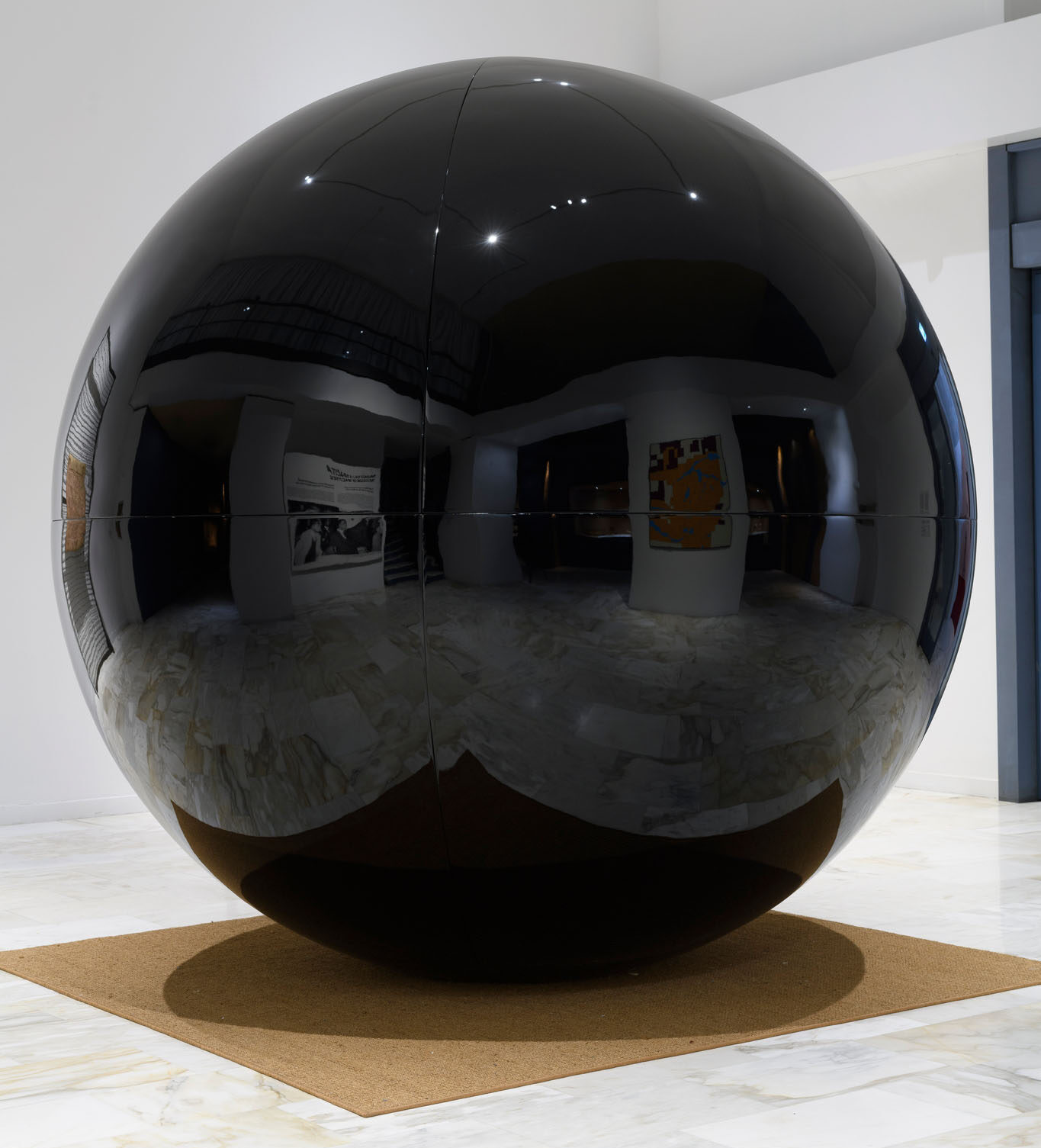Gnosis
Description:
Sammy Baloji’s installation, Gnosis, evokes and represents a reimagining of a 17th century wunderkammer (from which the Museum of Civilizations collections also originate). Like the globe usually found in studios and cabinets of curiosities, the black reflective sphere at the center of the room absorbs the images around it rather than restituting one unequivocal vision, as the scientific cartography would dictate instead. In the 1988 book The Invention of Africa: Gnosis, Philosophy, and the Order of Knowledge (African Systems of Thought) from which the work takes its title, Congolese philosopher Valentin-Yves Mudimbe explains how African philosophies are methods of inquiry and knowledge that emphasize a “higher and esoteric knowledge” that continues to remain hidden behind Western cultural constructions about Africa resulting from anthropological-ethno- graphic and religious prejudice.
Within the dark globe’s reflect we also glimpse a map of Ka- tanga, the artist’s home region where most of the mining activity in the Democratic Republic of Congo takes place today. Drawn by Belgian authorities, all the map’s local references to places, villages or communities have been removed in an act of abstraction that reveals the intent to fragmentize and codify the region by its minerals only. The straight lines recall the colonial demarcation lines drawn at the Berlin Conference of 1884-85 when European powers organized the invasion and partition of African territory. Two bronze plaques of Kongo textiles manifesting epistemic systems in the decoration of the- se ancient artifacts are also reflected in the globe: only today, thanks to decolonization practices such as those of Baloji, do they restitute speech to African gnosis, interweaving it with contemporary scenarios. ML

